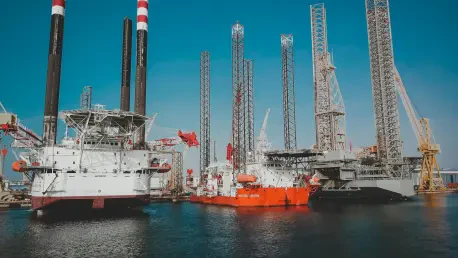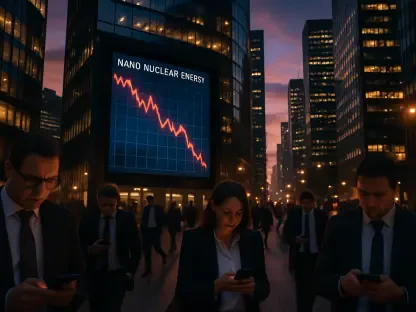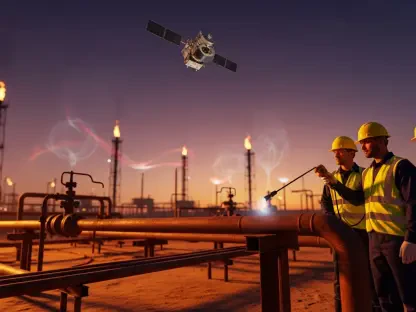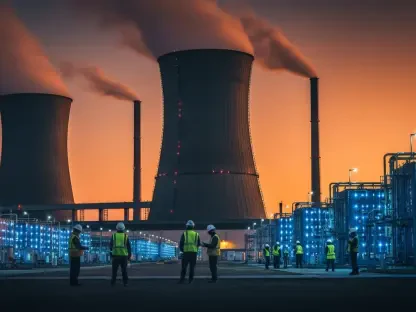The global energy landscape faced a significant jolt on November 14, with a Ukrainian military strike targeting Russia’s Novorossiysk port, a pivotal hub for Black Sea oil exports, disrupting an estimated 2.2 million barrels per day of oil. This volume, roughly 2% of the world’s supply, sent ripples through international markets, with oil prices surging by over 2% in the immediate aftermath. The incident has sparked intense debate among industry analysts, geopolitical experts, and market watchers. This roundup gathers diverse perspectives on the implications of the strike for global oil supply, examining the scale of disruption, strategic motivations, and broader energy security concerns.
Unpacking the Novorossiysk Attack: Diverse Views on a Critical Event
The strike on Novorossiysk, a major export point for Russian crude and oil products, has drawn sharp attention due to its role in global energy flows. Industry observers note that the port, particularly the Sheskharis terminal, handles substantial volumes, with October figures showing 761,000 barrels per day of crude and 1.794 million tonnes of oil products. The temporary suspension of operations following the attack has raised alarms about immediate supply shortages, prompting varied reactions from stakeholders across the energy sector.
Geopolitical analysts highlight the broader context of the Russia-Ukraine conflict, viewing the strike as part of Ukraine’s calculated strategy to target Russian energy infrastructure. Many argue that this move aims to undercut Moscow’s economic stability, given that oil revenues are a key pillar of its war funding. The consensus among these experts is that such actions mark a significant escalation, pushing the boundaries of asymmetric warfare into critical economic domains.
Market specialists, on the other hand, focus on the uncertainty surrounding the duration of the disruption. While some believe Russia can restore operations swiftly due to its robust infrastructure, others caution that prolonged delays could exacerbate supply constraints. This divergence in opinion underscores the complexity of predicting outcomes in a conflict zone, with implications for both short-term price volatility and long-term planning.
Dissecting the Fallout: Opinions on Oil Supply and Beyond
A Blow to Global Oil Flow: Assessing the Scale of Disruption
Energy market analysts widely agree that the suspension of 2.2 million barrels per day represents a notable dent in global supply, equating to 2% of daily consumption. This figure has fueled discussions about the fragility of oil flows through the Black Sea, a region already under strain due to ongoing hostilities. The immediate price spike of over 2% reflects market nervousness, with many pointing to Novorossiysk’s pivotal role as an export node.
Differing views emerge on the timeline for recovery. Some industry insiders suggest that Russia’s logistical capabilities and spare capacity at other ports could mitigate the impact within weeks. Conversely, others warn that damage to key facilities like the Sheskharis terminal may require extensive repairs, potentially prolonging the supply gap and sustaining upward pressure on prices.
A third perspective comes from commodity traders, who emphasize the psychological effect on markets. Even if physical disruptions are short-lived, the perception of risk in a critical supply corridor can drive speculative trading, amplifying volatility. This angle highlights how sentiment, as much as actual supply loss, shapes global energy dynamics in the wake of such events.
Strategic Targeting: Perspectives on Ukraine’s Energy Warfare
Military strategists view Ukraine’s strike on Novorossiysk as a bold demonstration of its growing long-range capabilities, with the use of Neptune missiles and drones showcasing tactical precision. Many in this field argue that targeting oil infrastructure, alongside simultaneous hits on facilities in Saratov and Engels, is a deliberate attempt to erode Russia’s economic backbone. The strategy, they note, prioritizes high-impact assets to maximize disruption.
Economic analysts offer a contrasting take, focusing on the potential backlash of such aggressive tactics. While acknowledging the intent to cripple Russia’s war funding through oil revenue losses, some caution that escalating attacks on energy assets could provoke harsher retaliatory measures, further destabilizing the region. This viewpoint weighs the short-term gains against the risk of broader conflict intensification.
A balanced opinion from policy experts suggests that Ukraine’s actions, while effective in drawing global attention, may have limited long-term impact unless sustained. They argue that Russia’s ability to reroute exports through alternative ports, such as those in the Baltic, could offset losses. This perspective calls for a deeper evaluation of whether such strikes can truly shift the economic balance in the conflict.
Ripple Effects: Market Reactions and Emerging Concerns
Financial analysts point to the immediate oil price surge as evidence of the market’s sensitivity to Black Sea disruptions. Novorossiysk’s significance as a conduit for Russian exports amplifies the impact, with many noting that even temporary halts can trigger widespread concern. The consensus here is that such events expose the vulnerability of concentrated supply routes in geopolitically tense areas.
Regional energy experts offer insights into potential shifts in oil logistics. Some predict an increased reliance on alternative Russian export points, though bottlenecks at Baltic ports could pose challenges. Others suggest that global buyers may seek diversification away from conflict-prone regions, potentially reshaping trade patterns over time. This view emphasizes adaptation as a key response to recurring instability.
A more cautious outlook comes from supply chain specialists, who question the sustainability of current energy networks under persistent threats. They argue that repeated incidents in the Black Sea corridor could lead to chronic volatility, urging policymakers and industry leaders to prioritize redundancy and resilience. Their concern centers on the long-term cost of operating in high-risk zones.
Collateral Damage: Human and Economic Impacts in Focus
Humanitarian observers highlight the broader toll of the Novorossiysk strike, noting injuries to three crew members and damage to civilian structures like apartment buildings. The impact on non-energy facilities, such as grain and container terminals, also draws concern, with many emphasizing the unintended consequences of military actions on local communities. This perspective underscores the human cost often overshadowed by economic analyses.
Industry assessments provide a technical lens, focusing on specific damages, such as those to the Arlan tanker and oil berths at Sheskharis. While some sources align with Russian officials like Governor Kondratyev, who stress rapid recovery efforts, others express skepticism about the timeline for restoring full capacity. This split reveals a tension between official narratives and on-the-ground realities.
International policy thinkers speculate on how such incidents shape global perceptions of the conflict. Many suggest that visible collateral damage could influence diplomatic stances, potentially spurring calls for enhanced energy security frameworks. Their view ties the localized effects of the strike to broader debates on how nations address the intersection of war and critical infrastructure.
Key Takeaways: Synthesizing Insights on the Aftermath
Compiling the range of opinions, the Novorossiysk attack stands out as a pivotal moment for energy markets, with the disruption of 2% of global oil supply emerging as a central concern. Analysts across sectors agree on the price surge as a direct outcome, though timelines for recovery remain debated. Strategically, Ukraine’s focus on energy assets garners both admiration for its precision and caution over escalation risks.
Market and policy perspectives converge on the need for mitigation strategies. Diversifying supply routes, enhancing security at key export hubs, and investing in alternative energy sources are frequently cited as buffers against similar disruptions. These suggestions reflect a shared recognition of the fragility exposed by the strike.
Geopolitical voices add a layer of complexity, noting that the attack’s implications extend beyond oil to the broader dynamics of the Russia-Ukraine conflict. The consensus leans toward viewing energy as an increasingly central battleground, prompting a reevaluation of how global powers approach stability in resource-rich conflict zones.
Looking Ahead: Energy Security Amid Ongoing Tensions
Reflecting on the discussions that unfolded after the Novorossiysk strike, the incident served as a stark reminder of the deep ties between geopolitical strife and global oil supply. Diverse opinions from industry, military, and policy spheres painted a multifaceted picture of disruption, strategy, and consequence. The event underscored how a single attack could reverberate through markets and communities alike.
Moving forward, stakeholders must consider actionable steps to fortify energy security. Exploring innovative technologies for infrastructure protection, fostering international cooperation to safeguard supply corridors, and accelerating the shift to diversified energy portfolios stand out as critical measures. These efforts could help mitigate the impact of future disruptions in volatile regions.
Beyond immediate responses, the dialogue sparked by this event should inspire deeper research into resilient energy systems. Engaging with reports on regional conflict impacts and staying informed on evolving military tactics in resource disputes can equip decision-makers with the tools to anticipate challenges. Addressing these issues proactively remains essential as energy continues to play a central role in global conflicts.









